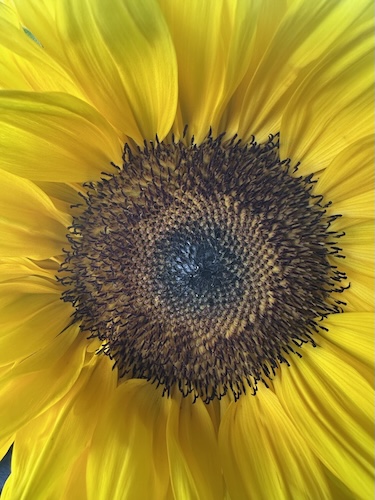Introduction
Tap/Click Me!
Alright, what's the golden ratio? 🤨 It's kinda like the other cool number everyone's always going on about—pi (π). Like pi, the golden ratio aka “phi (φ)” is an irrational number. What makes it “golden”? Well, this special number can be found in shapes and patterns that humans find naturally pleasing to the eye, appearing throughout nature and art as a divine proportion of perfect harmony.
What are irrational numbers, are they kinda crazy? Yeah, in a way! An irrational number is a number that can't be written as a simple fraction, like 1/2 = 0.5 or 3/4 = 0.75. Irrational numbers go on forever without repeating. Check out the first 11 digits of pi and phi:
- pi (π) = 3.1415926535...
- phi (φ) = 1.6180339887...
For an awesome visual exploration, check out Alan Becker’s Animation vs. Geometry, which brings geometric concepts to life.
Nature
Tap/Click Me!
The golden ratio can be found in nature if you know where to look. Let's find the golden ratio in sunflowers.
Sunflowers

Efficiency
The golden ratio shapes how a sunflower arranges its seeds in spiral patterns, with each seed positioned approximately 137.5 degrees (the golden angle) from the previous one. This arrangement allows the sunflower to pack seeds efficiently, maximizing space while minimizing overlap. The result is a highly optimized structure that supports healthy development and ensures each floret has good exposure to sunlight during growth.
Fibonacci Connection
A sunflower's seed head often has spiral counts that match Fibonacci numbers, like 34 spirals going in a clockwise direction and 55 going counterclockwise. The Fibonacci sequence is a series of numbers where each number is the sum of the two before it. It starts with 0 and 1, so it goes like this: 0, 1, 1, 2, 3, 5, 8, 13, 21, 34, 55 and so on. This pattern emerges naturally as the sunflower grows, with each new seed positioning itself at the golden angle from the previous seed. The ratio between consecutive Fibonacci numbers (like 55/34) approaches the golden ratio (1.618...), demonstrating how this mathematical principle directly manifests in the flower's physical structure.
Art
Tap/Click Me!
To be continued...
